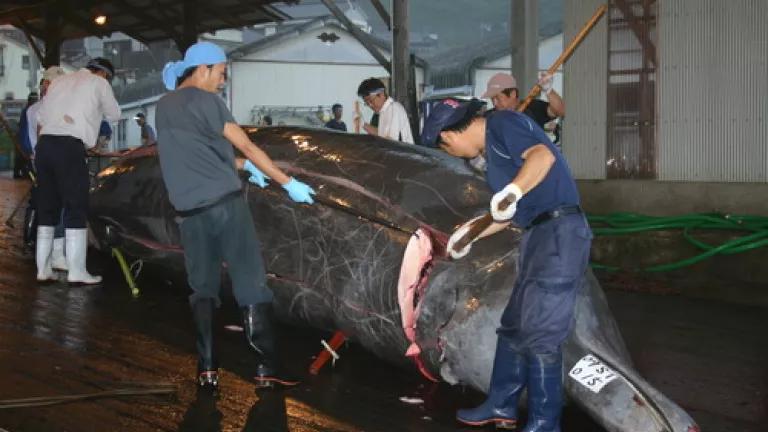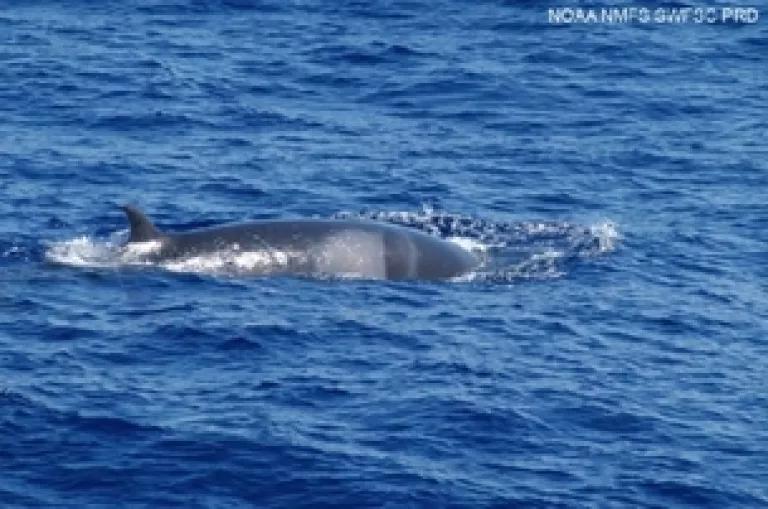
Co-written with Marine Mammals Program Assistant Lauren Packard
Recent reports from the Japanese Fisheries Agency confirm that Japanese whaling ships have returned home from the Southern Ocean after catching 266 minke whales and 1 fin whale. Although the Japanese whalers did kill hundreds of whales, this new development is nonetheless a win for the whales; the whalers’ total haul represents less than a third of Japan’s (self-allocated) quota of 900 “takes” per year, despite a $30 million increase in the whaling fleet’s security (drawn from tsunami relief funds).
Japan is blaming its comparatively meager catch on a combination of harsh weather conditions and the combined actions of various “saboteurs.” Of course, chief amongst those activists is the group Sea Shepherd, whose unconventional tactics—tailing Japanese ships for three months over thousands of nautical miles; tossing stink bombs, grappling hooks, and paint-filled bottles aboard whaling vessels; and even scrambling aboard Japanese ships themselves and refusing to leave until whalers dropped them off in Australia (costing the whalers countless days of hunting)—have been documented on the popular show Whale Wars. Sea Shepherd recently declared victory for once again disrupting the Japanese whaling season.

Reducing the length of Japan’s whaling season – and number of whales killed – is a positive step for the whales. Last year, for instance, Japan caught just a quarter of its quota; this year, it caught less than a third. These declining numbers—compounded with an anti-whaling shift in the Japanese public consciousness and international outcry against commercial whaling (Japan flouts international law when it hunts whales in an internationally-designated whale sanctuary for alleged “scientific research”)—hopefully spell the beginning of the end for Japanese whaling.
Photo Credit: EIA and NOAA, respectively.

